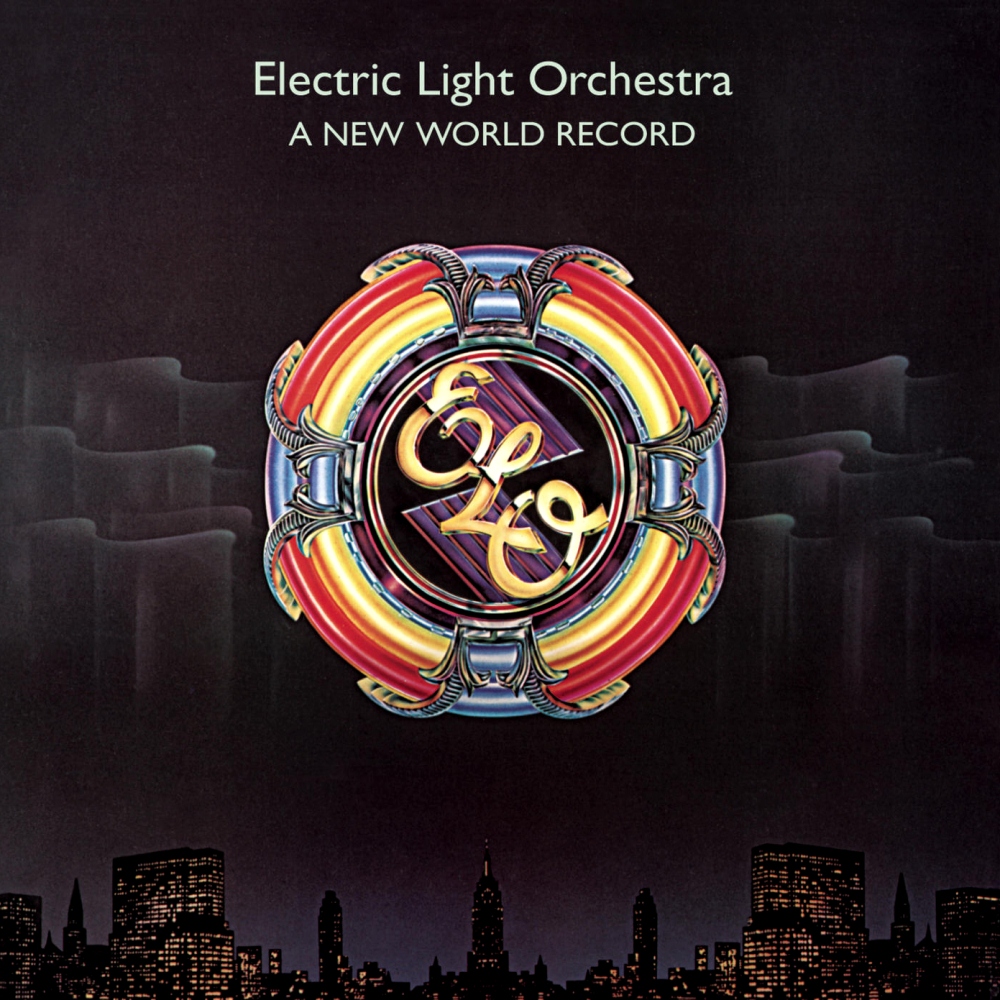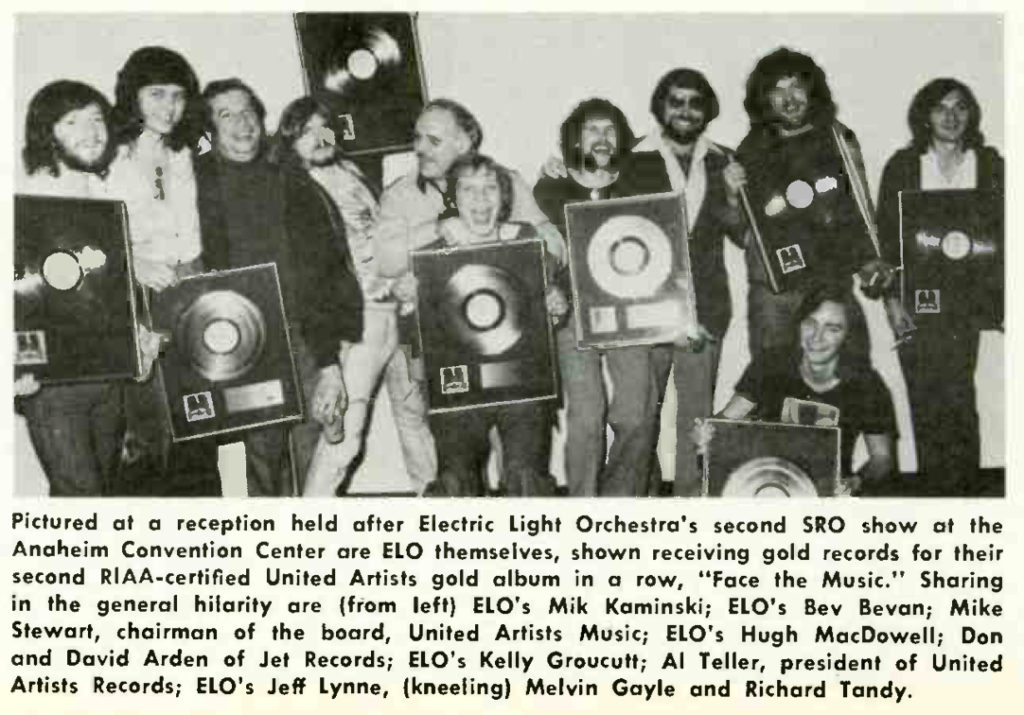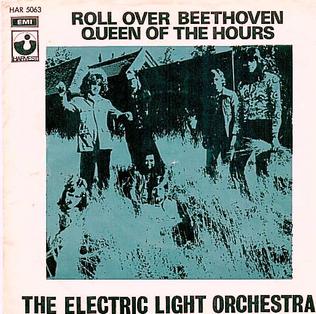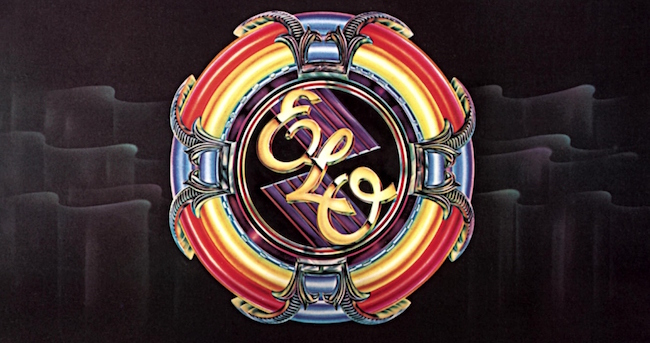
It’s hard to believe Electric Light Orchestra’s 1976 A New World Record, which sired three bona fide hits and four singles in all, was actually the orchestral rock band’s sixth album. They would release eight long-players while in their hitmaking prime, and 15 in all were released under the band aegis (the latter two of which as Jeff Lynne’s ELO in 2015 and 2019).
“A New World Record is definitely one of my all-time favorite albums,” founding drummer Bev Bevan tells Best Classic Bands in a 2024 interview. “Whilst we were recording it at Musicland Studios in Munich, the Olympic Games were happening, hence the title. I believe that this is when Jeff Lynne was reaching his brilliant best as both a composer and producer.”
Bevan is in an excellent position to comment. Born on Nov. 25, 1944, he played with Lynne dating back to ELO’s precursor, the Move, and even in the Birmingham, U.K., band that preceded the Move, Carl Wayne and the Vikings, who were active in the earlier ’60s. Wayne would help form the Move, as would Vikings singer Wayne, Chris “Ace” Kefford and Bevan. In 1967, they scored a top 10 U.K. hit in “I Can Hear the Grass Grow.”
They were soon joined by Roy Wood, who became one of the band’s steering songwriters and singers, and guitarist Trevor Burton.
It wasn’t until 1969 that another influential musician would join the Move, Lynne, who wasted no time in making his presence felt. Starting slow with two original songs and one co-write with Wood on the Move’s 1970 LP Looking On, Lynne moved on to four songs and one co-write with Wood on the band’s 1971 follow-up, Message from the Country. Lynne’s song contributions gave the Move an entirely new spin as well—not so much the orchestral sound he’d later pioneer in ELO so much as a moodier sound with inventive melodic twists—many in minor keys: the title track “Message from the Country,” “No Time,” “The Minister” and “Words of Aaron.” One might point to Badfinger, Syd Barrett-era Pink Floyd or Satanic Majesties-era Rolling Stones as a reference point.
But the album’s real keeper was a Lynne-penned song called “Do Ya” (originally titled “Look Out Baby, There’s a Plane A Comin'”). It was originally issued as the B-side of the U.K. hit “California Man” (the one later famously covered by avowed Move/ELO fans Cheap Trick). Eventually, “Do Ya” was anointed the single’s A-side and was phased into latter pressings of the Message from the Country album.
Listen to the Move’s version of “Do Ya”
“Do Ya” was, in turn, revived and made an even bigger hit by Lynne’s and Bevan’s post-Move band, Electric Light Orchestra, though not until their sixth album, A New World Record.
But let’s not get too far ahead of the narrative.
By 1970, ELO had become the Move’s official successor, their two key songwriters Lynne and Wood on board, as was drummer Bevan. Actually, the Move remained a band, mainly due to contractual obligations, while ELO—Lynne’s “orchestral project”—became the tail that wagged the dog. In 1972, Wood left ELO to return to less classically infused rock ’n’ roll, bowing his own new band called Wizzard.
Related: Our Album Rewind of ELO’s Face the Music

If it seems a little hard to follow, join the club. To make it easier for newbies, United Artists Records, the band’s American label, released an anthology titled Split Ends, sort of the best of the Lynne/Wood era, that spotlighted “Do Ya” alongside some of the deeper Lynne and Wood tracks. Dan Bourgoise, who would later launch the publishing company Bug Music, compiled the album, future Los Angeles Times pop critic Richard Cromelin and Creem editor Ben Edmonds wrote the notes, and Phonograph Record Magazine’s Martin Cerf edited the copy. With Split Ends, the Move suddenly had the American press cred it had lacked in the past.
 Electric Light Orchestra had many hits before A New World Record: “Roll Over Beethoven” (#6 in the U.K., while only #42 in the U.S.) perfectly illustrated the band’s modus operandi: rock ’n’ roll with strings and symphonic interludes. It was followed by “Showdown,” “Ma-Ma-Ma Belle,” “Strange Magic,” “Can’t Get It Out of My Head” and “Evil Woman.” Of these, only the latter two dented the American top 10.
Electric Light Orchestra had many hits before A New World Record: “Roll Over Beethoven” (#6 in the U.K., while only #42 in the U.S.) perfectly illustrated the band’s modus operandi: rock ’n’ roll with strings and symphonic interludes. It was followed by “Showdown,” “Ma-Ma-Ma Belle,” “Strange Magic,” “Can’t Get It Out of My Head” and “Evil Woman.” Of these, only the latter two dented the American top 10.
This was all before 1976, when A New World Record was released that October.
According to Bevan, “The core of the band—Jeff on guitar, Richard Tandy on keyboards, Kelly Groucutt on bass and myself on drums—were also playing well as a unit and comfortable now in the surroundings of Musicland Studios in Munich. Engineer Mack was a huge asset too.” (Mack was credited by his last name only, although his given first name is Reinhold. He’d also worked the knobs on recordings by Queen and Sparks.)
A New World Record contained only nine songs and, Bevan rightly claims, “not a duff one to be found.”
The album opens with “Tightrope,” and its very minor-key orchestration. Bevan recalls its “lovely orchestral opening (R.I.P the great Louis Clark ). I like the way that my drumming fits in so well with the strings and choir. Going into half time works well too. Some fine falsetto vocals from Jeff and a lovely piano outro from Richard [Tandy].”
While “Tightrope” got a bit of FM play, it segued in the sequence into “Telephone Line,” a #7 U.S. hit. The song opened with sounds one would hear when placing a landline call. Lynne explained in the CD liner notes that, “To get the sound on the beginning, you know, the American telephone sound, we phoned from England to America to a number that we know nobody would be at, to just listen to it for a while. On the Moog, we recreated the sound exactly by tuning the oscillators to the same notes as the ringing of the phone.”
Roll over Alexander Graham Bell!
Bevan further extols “Telephone Line”’s “emotive lead vocal by Jeff and tight backing vocals” and his own “good drum fills,” adding, “I love this song and I still play it live with my current band, Quill. My wife, Joy, who’s our lead singer, sings it beautifully.”
“Rockaria” is one of the four singles, though never released as one in the U.S. Yet those who listened to album-rock FM radio at that time will remember it. Bevan calls attention to its “clever play on words in the title” (think Rock-ARIA, an aria being a composition for a single voice, not Rock-a-REE-uh).
He adds, “The song starts with a genuine mistake from session soprano Mary Thomas, then a fabulous operatic opening before I clatter in on the drums into a real ’50s style rocker. It also has a great guitar solo from Jeff.” A dependable concert rouser, Bevan remembers, “It went down a storm live on stage.”
Side one closed with “Mission,” arguably the LP’s least known track if present-day Spotify spins are an indication. It’s a favorite of Bevan, who likens it to “a sci-fi theme—very atmospheric, with a lovely lead vocal, clever lyrics, beautiful orchestrations and a dramatic end.”
“So Fine,” which opened side two, was never released as a single, but it is one of the album’s bona fide highlights. Indeed its opening lines of “Ooh-la, ooh-la-la, ooh-la, ooh-la-la, ooh” are an ear grabber.
Lynne has explained that he was trying to write “So Fine” in more of an American style, describing it in an interview with Roger Scott on the syndicated radio program Classic Albums as “a bouncy little number. I suppose it was…trying sound a bit like an American group with harmonies, like the Doobie Brothers or something.”
Bevan calls attention to its “fast guitar intro and tight rhythm section throughout…nice tempo changes too…the percussion and strings working well together—and a great ending.”
“Livin’ Thing,” a single, made it to #13 on Billboard’s Hot 100, cracking the top 10 in Record World and Cash Box. Lynne told Goldmine magazine in 2013 that the “augmented chords,” defined as a chord made up of two major thirds and for which George Harrison was known, helped define its sound.
Bevan applauds its “superb violin intro and solo from Mike Kaminski, and the girl session singers [who were] well featured,” which helped make it, obviously, “a very commercial song.”
Watch the official video for “Livin’ Thing”
Then of course there was the album’s remake of the Move’s “Do Ya.” (And again, if you remember “Do Ya” as having come sooner in ELO’s career, join the club. It did, after all, reprise the riff from the band’s 1972 “10538 Overture.”) Billboard noted the song’s “irresistibly catchy melody line and syncopated beat.”
“It was a reworking of a song Jeff originally wrote for the Move,” says Bevan, who pleads with ELO fans to go back and listen to the Move’s original version. “A great guitar riff opening. It was another song that went down a storm live on stage.”
The album garnered generally positive press, AllMusic Guide going so far as to claim, “A New World Record contains seven of the best songs ever to come out of the group. The Beatles’ influence is present, to be sure, but developed to a very high degree of sophistication and on Lynne’s own terms, rather than being imitative of specific songs.”
From Bevan’s standpoint: “A New World Record is a fabulous album, and I am proud to have been part of it.”
Concisely described? So fine!
Watch Jeff Lynne’s ELO perform “Livin’ Thing” live at Glastonbury in 2016
The extensive ELO catalog is available in the U.S. here and in the U.K. here.


3 Comments
No mention of Shangri-La which closes the side-b and album? Do Ya reprise the riff of 10538 Overture? To my ears they totally different!
On their 1974 live album “The Night the Light Went On in Long Beach” (hard to find but recently resurrected), they perform 10538 Overture with the Do Ya riff interpolated about 2/3 of the way through.
Just noticed that there’s also second track without mention. Above The Clouds which is track three on b-side before Do Ya!